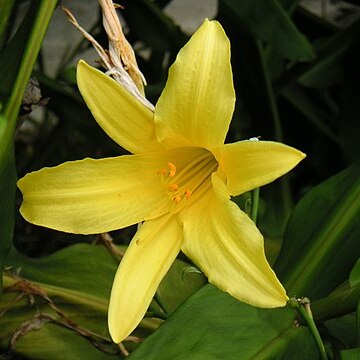A herb. It loses its leaves during the winter. It grows 50 cm high and spreads 50-60 cm wide. The roots are rope like and 1.5-3 mm thick. The leaves are narrow and 20-60 cm long by 0.3-1.5 cm wide. They are grass like. The flowering stalk is short. There are 2-3 groups of 1 or 2 flowers. The flowers have a smell. They open in the evening and last 1 or 2 days. The flowers are lemon coloured. The fruit is a capsule. It is oval and 2-3 cm long by 1-2 cm wide.

